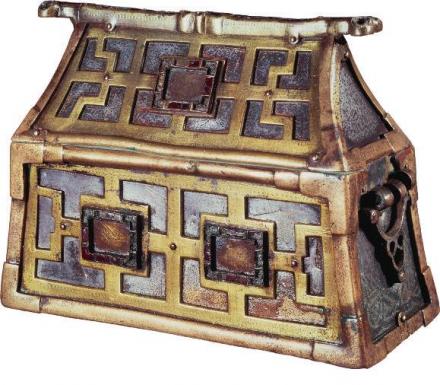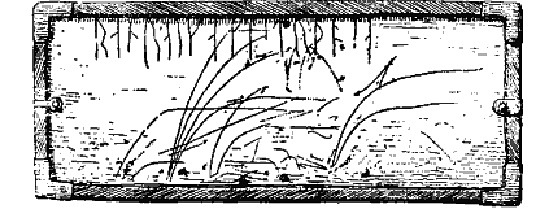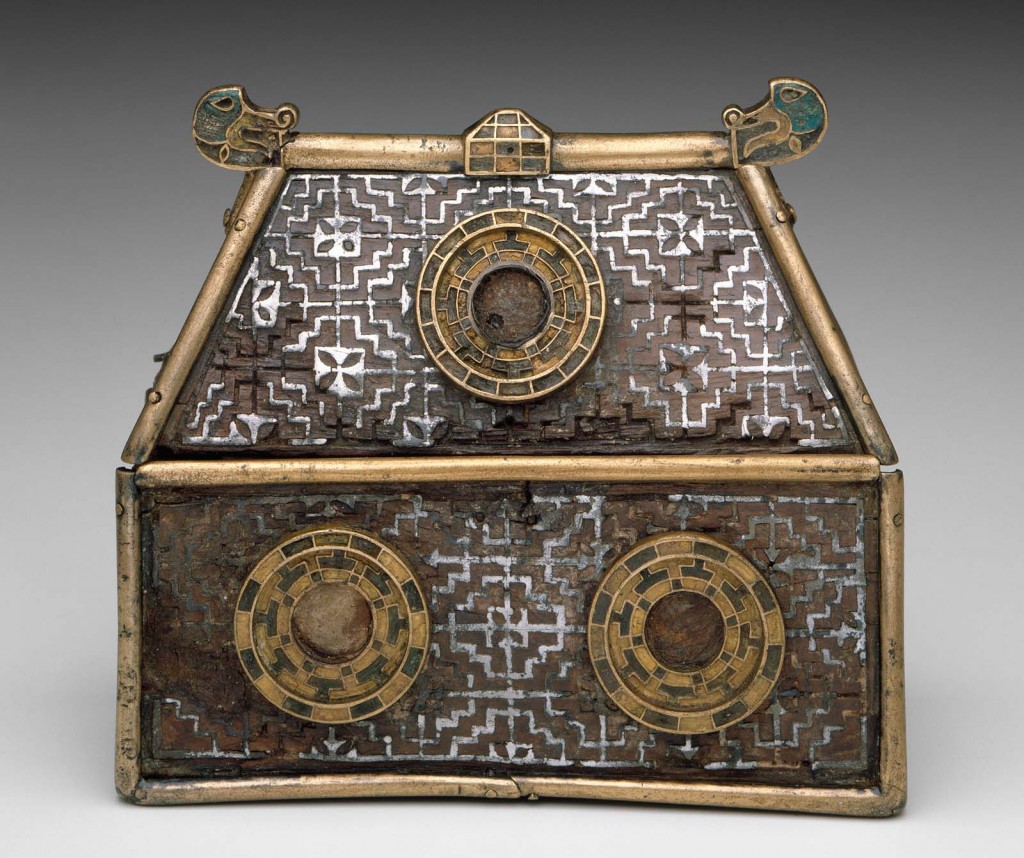
Now housed in the Danish National Museum, this beautiful reliquary of Irish-type was most likely stolen during Viking raids on Ireland or Scotland. It dates from the 8th century AD and is made from yew wood encased in decorative panels of bronze and enamel. Somewhat unusually, it contains a runic inscription on its base. This was added in the 10th century AD and reads ‘Ranvaick a kistu thasa‘ or in English, ‘Ranvaik (a female name) owns this casket’. This may indicate that on its arrival in Scandinavia, the shrine was reused by a Viking noble woman called Ranvaik, possibly as a casket for her personal items.

In early medieval Ireland saint’s relics played a important role in both religious and secular affairs and as a result they were often enshrined in richly adorned reliquaries, similar to the one from Copenhagen. For instance, in 800 AD the Annals of Ulster record the ‘placing of the relics of Conlaed in a shrine of gold and silver‘.

Unsurprisingly, such precious items were often targeted during Viking raids. For example, in 832 AD the monastery at Bangor in Co. Down was attacked and the shrine of St. Comgall was stolen. Only interested in the precious case, the looters discarded the saint’s relics, which were ‘shook from their shrine‘ onto the the ground (Annals of Ulster). Similarly in 878 AD, the threat of Viking attacks forced the monks of Iona to send ‘the shrine of Colum Cille and his other halidoms‘ to Ireland ‘to escape the foreigners‘ (Annals of Ulster).
Although it is likely that the majority of stolen shrines were subsequently hacked up for bullion, it appears that some at least, were kept intact. In Norway a small number of Viking Age graves, at sites such as Melhus and Setnes, have produced complete Irish-type reliquaries and these most likely represent stolen booty. The Copenhagen shrine was also originally discovered in Norway and it is possibly that it too represents a disturbed grave good. The location of the monastery where the shrine first resided, however, remains a mystery.
Reference
Image 1: Copyright the Danish National Museum



The second casket pictured here should read as from “Emly” not “Emily”, I believe.
Hi Eric, well spotted, I’ll corrected it now. Thanks 🙂